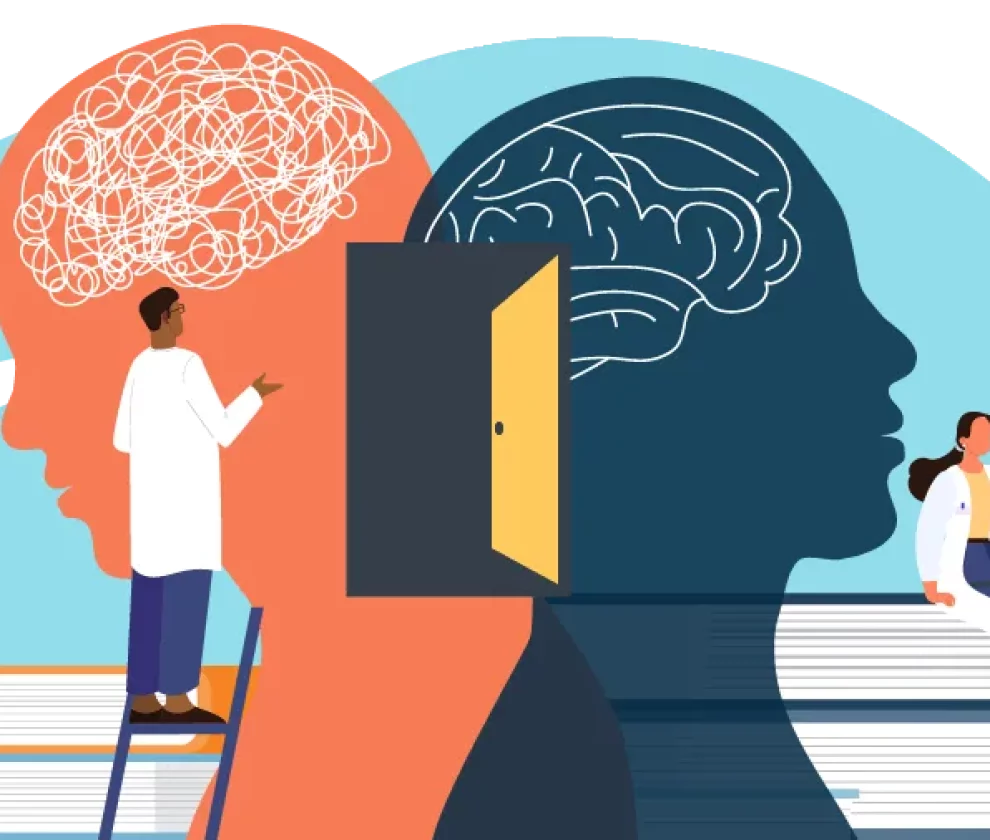TV makes therapy look intense, mysterious, and sometimes even ridiculous.
You’ve probably seen it: a dramatic couch session, a crying client, and a therapist who seems to already know all the answers.
But that’s not what real therapy is like.
Let’s clear up some of the biggest myths, show what actually happens in the room, and help you find therapy.
Myth #1: Therapists Just Sit Silently and Nod
You’ve seen the scenes.
A quiet office. A long pause. The client spills their guts while the therapist stares blankly and scribbles in a notebook.
But therapy isn’t that stiff or one-sided.
In reality, therapists talk. They ask questions. They help you sort through thoughts and feelings in a way that actually goes somewhere.
Sure, silence has its place. But most sessions are interactive. You’re having a real conversation with someone trained to guide you, not judge you.
Therapy works best when it’s collaborative.
You bring your story. Your therapist brings tools, perspective, and a whole lot of empathy.
Together, you build something new. Build a better understanding of what’s happening, why it matters, and what you can do about it.
So no, your therapist won’t just sit there and nod.
They’ll show up. And they’ll help you show up, too.
Myth #2: You Have to Be in Crisis to Go to Therapy
Hollywood loves a rock-bottom moment.
Someone loses everything, breaks down, and finally walks into a therapist’s office like it’s their last hope.
But therapy isn’t just for falling apart.
You can go when life is fine but something feels off. You can go when you’re facing a big decision. You can go just because you want to get to know yourself better.
There’s no mental health scoreboard you have to hit to “qualify.”
You don’t need a diagnosis, a disaster, or a trauma. You only need you and a willingness to talk, reflect, and grow.
In fact, the earlier you seek support, the better.
Getting help before things get out of hand can make the process smoother, less overwhelming, and more empowering.
Therapy isn’t the emergency room.
It’s the everyday tune-up, the personal check-in, the safe space to figure things out, even if life seems okay on the outside.
Myth #3: Therapy Fixes You in One Breakthrough Moment
TV loves a dramatic breakthrough scene.
Someone cries, has a big realization, and walks out magically healed.
That’s not real life.
Real therapy is slower. Gentler. Messier.
Sometimes you talk about something for weeks before it clicks. Sometimes you leave feeling better and sometimes you leave feeling tired or unsure. Sometimes the “progress” is that you even showed up.
And that’s okay.
Therapy isn’t a big fix. It’s a series of small shifts.
You start setting boundaries. You start noticing patterns. You start being kinder to yourself.
And over time, those small things? They add up to something bigger.
Therapy is a process. One that’s built on trust, honesty, and showing up again and again.
Progress is real. But it’s rarely dramatic. It’s quiet. Steady. And honestly? Way more lasting.
Myth #4: Therapy Is Just Talking About the Past
Sure, your past matters. It shapes how you see the world, yourself, and other people.
But therapy isn’t about living in the past. It’s about understanding it, so you can move forward.
A lot of modern therapy focuses on the here and now.
You might talk about how your week went, what’s stressing you out, or how to handle something coming up tomorrow.
Some days you dig into childhood memories. Other days you learn skills to manage anxiety or regulate emotions in real time.
Therapists use tools like CBT or mindfulness to help with patterns that show up today, even if they started years ago.
It’s not just talk. It’s action, reflection, and practice.
So no, you’re not signing up to relive every painful memory. You’re learning how to stop the past from running your future.
Myth #5: Good Therapists Give You All the Answers
Movies often show therapists as wise gurus with all the answers.
They give perfect advice, say the exact right thing, and solve the character’s entire life in one line.
That’s not how it works.
Real therapy isn’t about being told what to do.
It’s about figuring out what works for you and why.
Your therapist might help you explore options, ask thought-provoking questions, or reflect back what you’re saying.
But they won’t hand you a blueprint.
They’ll help you build your own.
That’s what makes therapy empowering. It puts the focus on your values, your choices, your voice.
You already have the answers inside you.
A therapist just helps you hear them more clearly.
And that kind of clarity? It’s way more powerful than advice.
Myth #6: Only “Certain” People Go to Therapy
If you went by TV, therapy is mostly for rich white people with fancy jobs.
But in real life? Therapy is for everyone.
It’s for parents juggling stress. Students trying to make sense of themselves. People healing from trauma. Folks exploring their identity. Caregivers who are burned out. Professionals who feel stuck.
Mental health doesn’t play favorites and support shouldn’t either.
That’s why trauma-informed programs like Novu Wellness focus on creating safe, inclusive spaces.
Therapists are trained to meet people where they are emotionally, culturally, and personally.
There’s no “type” of person who goes to therapy.
There’s just you, and your reasons are always valid.
The Real Picture
TV doesn’t always get therapy right.
It’s not all breakthroughs, advice-giving, or dramatic scenes. Real therapy is quieter. More personal. And built around you.
Whether you’re dealing with something heavy or just need support navigating life, therapy can help you feel more grounded, understood, and in control.
We have many different programs based on our clients’ needs.
At Novu Wellness, we offer care that’s real, not scripted. Because your story deserves that.




